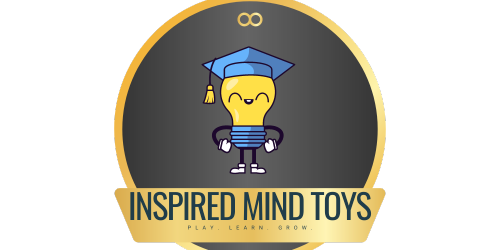In early childhood education, fostering creativity and problem-solving skills is crucial for a child’s development. By encouraging children to think creatively and independently, they become more flexible, adaptable, and resilient individuals. This article explores the various benefits of creative problem solving in early childhood education, from promoting critical thinking to enhancing communication and collaboration skills. Through engaging activities and hands-on learning experiences, children not only develop essential problem-solving abilities but also gain a lifelong love for learning and exploration.
Benefits Of Creative Problem Solving
Table of Contents
Understanding Creative Problem Solving
Definition of creative problem solving
Creative problem solving refers to the process of finding innovative and unique solutions to challenges and issues. It involves thinking outside the box and using unconventional methods to address problems. Creative problem solvers often find new perspectives and approaches that others may not consider. This approach encourages individuals to tap into their imagination, think critically, and come up with original ideas.
Types of creative problem solving activities suitable for children
There are various types of creative problem-solving activities that are suitable for children. These include brainstorming sessions, where children generate ideas and explore different possibilities. Another activity is divergent thinking, which encourages children to come up with as many ideas as possible without judgment or evaluation. Additionally, role-playing and storytelling can help children engage in imaginative problem-solving scenarios. These activities allow children to develop their creativity and critical thinking skills while fostering their problem-solving abilities.
Difference between regular problem-solving and creative problem-solving strategies
Regular problem-solving strategies involve using traditional and conventional methods to find solutions. These strategies often follow a step-by-step process and rely on known techniques or previous experiences. In contrast, creative problem-solving strategies involve thinking beyond the obvious and exploring new approaches. This type of problem solving encourages individuals to think critically, consider multiple perspectives, and embrace innovative ideas. Creative problem solving empowers individuals to find unique solutions and challenges them to think outside the box.
Importance of Creative Problem Solving in Early Childhood Education
Role of creative problem solving in cognitive development
Creative problem solving plays a crucial role in the cognitive development of children. It enhances their ability to think critically, analyze information, and make connections between different concepts. By engaging in creative problem-solving activities, children develop their cognitive skills such as logical reasoning, abstract thinking, and decision-making abilities. These skills lay a strong foundation for their overall intellectual growth and contribute to their success in future academic pursuits.
Influence on emotional and social development
Creative problem solving also has a significant impact on the emotional and social development of children. When children engage in creative problem-solving activities, they learn to manage frustration, regulate emotions, and persevere in the face of challenges. These experiences teach them resilience, which is essential for their emotional well-being. Moreover, creative problem solving often involves collaboration and communication, which help children develop their social skills and learn to work effectively in teams.
Value for long-term academic and career prospects
Nurturing creative problem-solving skills in early childhood sets the stage for long-term academic and career success. Creative problem solvers are more likely to excel in various academic subjects, as they have developed the ability to think critically, come up with unique solutions, and approach challenges from different angles. Furthermore, creative problem solving is a highly sought-after skill in the modern workforce, where innovation and adaptability are essential. By cultivating creative problem-solving skills, children are better equipped to navigate the ever-changing demands of the future job market.
Parents’ Role in Developing Creative Problem-Solving Skills
Modeling and encouraging creative problem solving at home
Parents play a crucial role in developing their child’s creative problem-solving skills. One effective way is by modeling and demonstrating creative problem solving in their own lives. By sharing their own experiences and decision-making processes, parents can teach children how to approach problems in a creative and innovative manner. Additionally, parents can encourage their child to think creatively by asking open-ended questions, encouraging imagination, and providing opportunities for exploration and experimentation.
Supported play and learning experiences
Parents can also promote creative problem solving through supported play and learning experiences. This can involve providing children with age-appropriate toys and materials that stimulate their imagination and encourage problem solving. Open-ended toys, such as building blocks or art supplies, allow children to explore and engage in creative problem-solving activities. Parents can also engage in play-based activities with their child, such as puzzles or board games, which provide opportunities for problem-solving and critical thinking.
Cultivating an environment that allows for creative problem solving
Creating an environment that fosters creative problem solving is crucial for children’s development. Parents can encourage exploration and curiosity by providing a safe and supportive space for their child to experiment and take risks. They can also create a routine that allows time for unstructured play and independent thinking. By nurturing an environment that values creativity and problem solving, parents can help their child develop these skills in a natural and enjoyable way.
Teachers’ Role in Developing Creative Problem-Solving Skills
Incorporating creative problem-solving activities in curriculum
Teachers have a pivotal role in developing creative problem-solving skills among their students. By incorporating creative problem-solving activities into the curriculum, teachers can provide opportunities for students to practice and refine their skills. These activities can range from group projects that require students to find innovative solutions to real-world problems to individual assignments that challenge them to think creatively. By embedding creative problem-solving into the curriculum, teachers can help students develop this important skill set.
Using a problem-solving approach in teaching
Teachers can also adopt a problem-solving approach in their teaching methods. Instead of simply presenting information to students, teachers can guide them through the process of solving problems and encourage them to come up with creative solutions. This can involve using open-ended questions, promoting critical thinking, and allowing students to explore different strategies. By focusing on the process of problem-solving rather than just the outcome, teachers empower students to think critically and develop their creative problem-solving skills.
Providing feedback and guidance to enhance creative problem-solving skills
Teachers play a vital role in providing feedback and guidance to enhance students’ creative problem-solving skills. By offering constructive feedback, teachers can help students identify areas for improvement and provide guidance on how to approach problems more creatively. Additionally, teachers can offer support and encouragement throughout the problem-solving process, creating a safe and supportive environment for students to take risks and explore different ideas. This feedback and guidance are essential in developing students’ creative problem-solving abilities.
Challenges in Implementing Creative Problem Solving Strategies
Resistance to unconventional methods
One of the challenges in implementing creative problem-solving strategies is the resistance encountered from individuals who are accustomed to traditional methods. Some may be skeptical or hesitant to embrace unconventional approaches. Overcoming these challenges requires creating awareness and explaining the benefits of creative problem-solving, such as enhanced critical thinking and innovation. Educators and parents need to demonstrate the effectiveness of these strategies and show how they can lead to more creative and successful outcomes.
Diverse classrooms and individual learning styles
Another challenge is catering to the diverse needs and learning styles of students in a classroom setting. Creative problem-solving strategies may need to be adapted and differentiated to meet the unique requirements of each student. This can involve providing various resources and tools, such as visual aids, hands-on activities, or technology-based solutions, to ensure all students can engage and participate effectively. Flexibility and inclusiveness are key in addressing the diverse needs of students in the context of creative problem-solving.
Constraints in assessment and evaluation
Assessing and evaluating creative problem-solving skills can be challenging due to the subjective nature of this skill set. Traditional assessment methods may not capture the full extent of a student’s creative problem-solving abilities. To address this, educators need to develop alternative assessment strategies that allow for the demonstration of creative thinking and problem-solving skills. These can include performance-based assessments, portfolios of work, or project-based evaluations. By employing a diverse range of assessment methods, educators can better evaluate and recognize students’ creative problem-solving skills.
Case Studies on Creative Problem Solving
Successful Creative Problem-Solving Approaches in different educational institutions
Multiple educational institutions have successfully implemented creative problem-solving approaches in their curriculum. For example, some schools have integrated project-based learning, where students tackle real-world problems and develop innovative solutions. Others have fostered a culture of creativity and critical thinking through dedicated programs and extracurricular activities. These case studies provide valuable insights into the effective implementation of creative problem-solving strategies and highlight the positive impact they have on students’ academic and personal growth.
Evaluation of children’s progress in creative problem-solving
Evaluating children’s progress in creative problem-solving can be challenging but essential for tracking their development. Educators employ a range of evaluation methods, such as rubrics, self-assessment, and peer reviews, to assess students’ abilities in creative problem solving. These assessments focus on the process rather than the final outcome and consider factors like critical thinking, originality of ideas, and ability to adapt to different situations. By evaluating children’s progress in creative problem-solving, educators can identify areas for improvement and provide tailored support and guidance.
Lessons learned from implementing creative problem-solving strategies
Implementing creative problem-solving strategies provides valuable lessons for both educators and students. Educators learn the importance of fostering a supportive and inclusive environment that encourages risk-taking and innovation. They also realize the need to provide students with the necessary tools and resources to enhance their creative problem-solving skills. Students, on the other hand, learn the value of collaboration, resilience, and embracing diverse perspectives. These lessons not only contribute to academic success but also equip students with lifelong skills that extend beyond the classroom.
Tools and Resources for Promoting Creative Problem Solving
Educational toys that foster creative problem-solving skills
Various educational toys can help promote and enhance creative problem-solving skills in children. Building blocks, construction sets, and puzzles encourage children to think critically and find innovative solutions. Art supplies, such as paints, clay, or drawing materials, allow children to express their ideas and engage in open-ended problem-solving. Furthermore, logic and strategy games, such as chess or logic puzzles, help children develop their critical thinking abilities. By providing these toys, parents and educators can create an environment that encourages creative problem-solving.
Digital tools and applications promoting creative thinking
Digital tools and applications can also be valuable resources for promoting and developing creative thinking skills. Online platforms and apps designed specifically for children offer interactive and engaging activities that stimulate imagination and problem-solving. These tools often involve challenges and puzzles that require children to think creatively and find innovative solutions. Digital tools can also provide opportunities for collaboration with peers or access to a wide range of educational resources. Integrating these resources into the learning environment can enhance children’s creative problem-solving abilities.
Learning resources and guides for parents and teachers
A wide range of learning resources and guides are available to support parents and teachers in promoting creative problem-solving skills. These resources provide strategies, activities, and step-by-step guides that enable parents and educators to create meaningful learning experiences. They offer insights into effective teaching methods, assessment techniques, and ways to nurture creativity and critical thinking. Utilizing these resources allows parents and teachers to develop a holistic approach to fostering creative problem-solving skills in children.
Link Between Creative Problem Solving and Other Key Skills
Creative problem solving and critical thinking
Creative problem solving and critical thinking are closely intertwined. Engaging in creative problem-solving activities requires individuals to think critically, analyze information, and evaluate different options. The ability to think critically allows individuals to identify problems, consider alternative solutions, and make informed decisions. Creative problem-solving enhances critical thinking skills by encouraging individuals to approach problems from multiple perspectives, challenge assumptions, and consider unconventional ideas. Together, these skills empower individuals to find innovative and effective solutions.
Creative problem solving and communication skills
Creative problem solving also has a strong link to communication skills. The process of finding and implementing creative solutions often involves collaboration, sharing ideas, and effective communication. Creative problem solvers need to articulate their thoughts, actively listen to others, and convey their ideas clearly. The ability to communicate effectively allows individuals to collaborate, negotiate, and present their ideas in ways that inspire and influence others. By developing creative problem-solving skills, individuals also enhance their communication abilities, making them effective team members and leaders.
Creative problem solving and leadership potential
Creative problem solving is a key characteristic of effective leaders. Leaders need to address complex issues, find innovative solutions, and inspire their teams. By honing their creative problem-solving skills, individuals develop the ability to navigate challenges, recognize opportunities, and lead with confidence. Creative problem solvers are not afraid to take risks and think outside the box, qualities that are essential for effective leadership. Therefore, fostering creative problem-solving skills in early childhood education can contribute to the development of future leaders.
Advantages of Teaching Creative Problem Solving Beyond the Classroom
Application of creative problem solving in everyday life
Teaching creative problem solving beyond the classroom has numerous advantages, one of which is its application in everyday life. Creative problem solving equips individuals with the skills to tackle various challenges and make informed decisions in their personal and professional lives. Whether it’s finding innovative solutions to household problems, overcoming obstacles in personal relationships, or making sound financial decisions, creative problem-solving skills are invaluable.
Value of creative problem solving for the future work environment
The future work environment is increasingly complex and dynamic, requiring individuals to be adaptable and innovative. Creative problem-solving skills are highly valued by employers as they contribute to the growth and success of organizations. Individuals who possess these skills are more likely to thrive in the ever-evolving workplace, where the ability to come up with creative solutions and address complex problems is vital. Teaching creative problem solving beyond the classroom prepares individuals for future employment opportunities and equips them with a competitive edge.
Importance for mental health and well-being
Creative problem solving also plays a significant role in promoting mental health and well-being. Engaging in creative problem-solving activities fosters resilience, positive thinking, and a sense of accomplishment. It allows individuals to explore their own ideas, think critically, and feel empowered in their problem-solving abilities. This can have a positive impact on self-esteem and overall mental well-being. Additionally, creative problem solving can serve as an outlet for stress and anxiety, providing individuals with a constructive and enjoyable way to navigate challenges.
Future of Creative Problem Solving in Early Childhood Education
Expected shifts in educational frameworks towards more creativity
There is a growing recognition of the importance of creativity and creative problem solving in education. As a result, educational frameworks are expected to shift towards incorporating more creativity in their curriculum. This includes integrating creative problem-solving activities, promoting critical thinking, and encouraging innovation. Educators are also likely to embrace a more holistic approach that values creativity alongside academic achievements. The future of early childhood education will likely prioritize the development of creative problem-solving skills to equip children for the challenges and opportunities of the future.
Role of technology in Creative Problem-Solving practices
Technology will continue to play a significant role in creative problem-solving practices. Digital tools and applications provide access to a wealth of information, resources, and interactive learning experiences. Advancements in technology, such as virtual reality and augmented reality, can further enhance creative problem-solving activities by providing immersive and engaging environments. Technology also enables collaboration and communication, allowing individuals to connect and share their ideas on a global scale. Embracing technology in early childhood education can amplify the impact of creative problem solving and prepare children for a technology-driven future.
Strategies for continued emphasis on creative problem-solving
To ensure a continued emphasis on creative problem solving in early childhood education, it is essential to prioritize professional development for teachers. Providing educators with training and resources enables them to effectively incorporate creative problem-solving strategies in their teaching practices. Collaboration among educators, parents, and policymakers is also crucial to create a supportive ecosystem that values and promotes creative problem-solving skills. Additionally, ongoing research and evaluation can provide insights into the effectiveness of different strategies and inform the development of best practices for fostering creative problem-solving skills in early childhood education.











